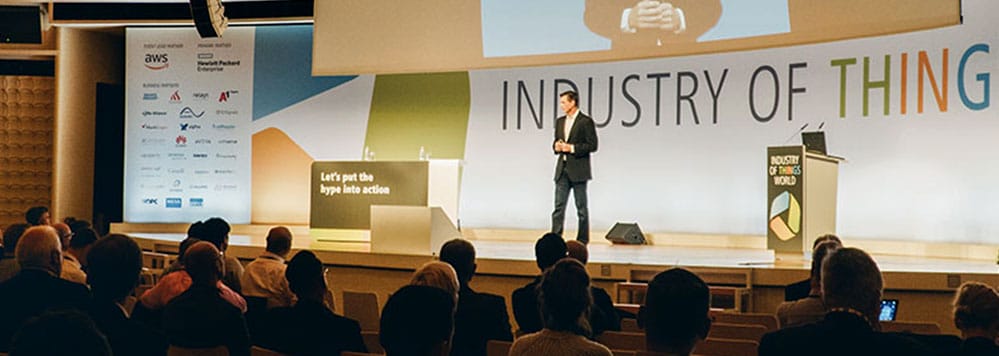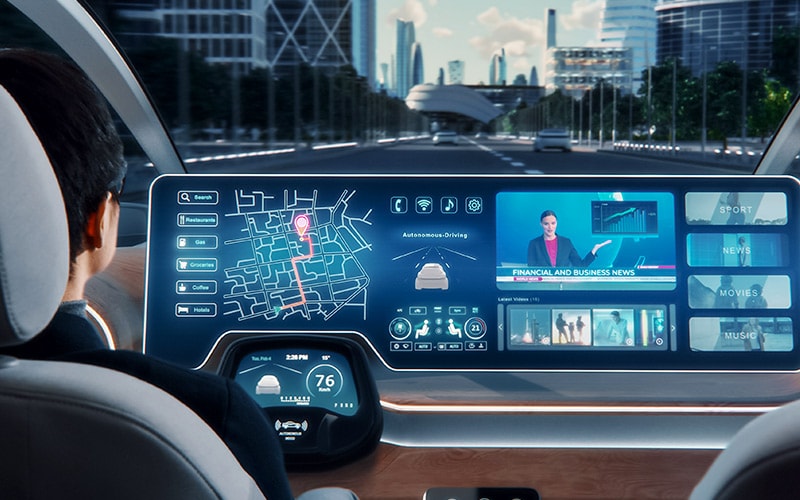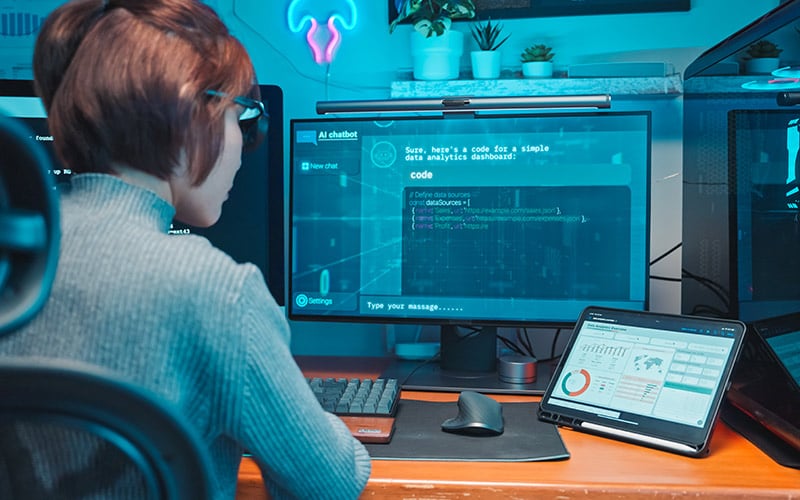Foreword
The 2019 Industry of Things World in Berlin was the premier industrial internet of things event in Europe and built upon the momentum of the Industry of Things World USA conference in San Diego earlier this year. Reflecting on our time at the conference, it was a successful event that had 117 industry expert speakers, 253 industrial IoT projects, 25 hours of networking and 291 One2Ones. The conference provided a platform to share ideas, learn and exchange knowledge with the experts who play an active role in the industrial internet of things scene. It brought together the largest European community of high-level cross-industry executives and 650 registered attendees.
I wish to thank the we.CONECT team for inviting me to chair the conference for the second time. It was a pleasure to present such knowledgeable speakers from different industries and in a variety of roles.
The event covered a great number of topics, with main themes of artificial intelligence, automation, standards, interoperability, cloud, new business models and digital transformation.
Events like the IoT World Berlin are important forums as we progress through the realities of Industry 4.0.
IoT World Berlin was a big success thanks to the energy and contributions of the attendees, speakers and sponsors. Of course, none of it would have been possible without the planning, hard work and execution of the we.CONECT team. On behalf of the Industry of Things World team and Infosys Knowledge Institute, we present this journal, which includes highlights from the 2019 Industry of Things World in Berlin conference. For attendees, this journal will serve as a happy reminder of a productive and enjoyable conference. For others, we are confident it will provide value and help you progress on your own industrial IoT journey.
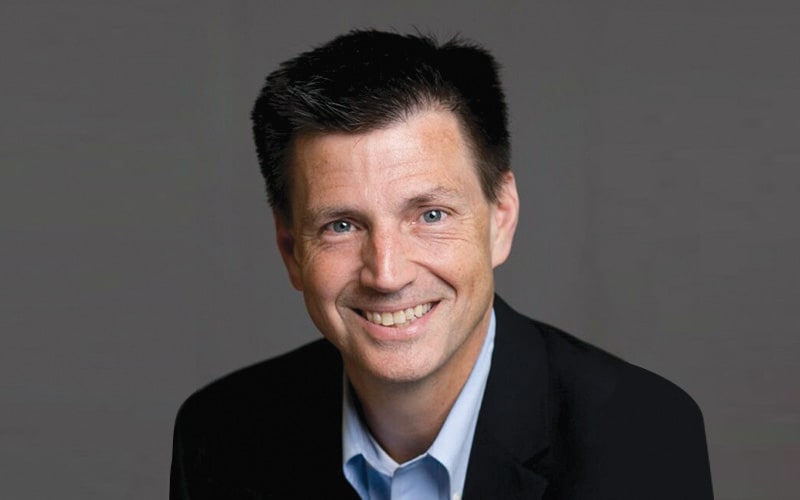
Jeff Kavanaugh
Conference Chair, VP and Global Head, Infosys Knowledge Institute
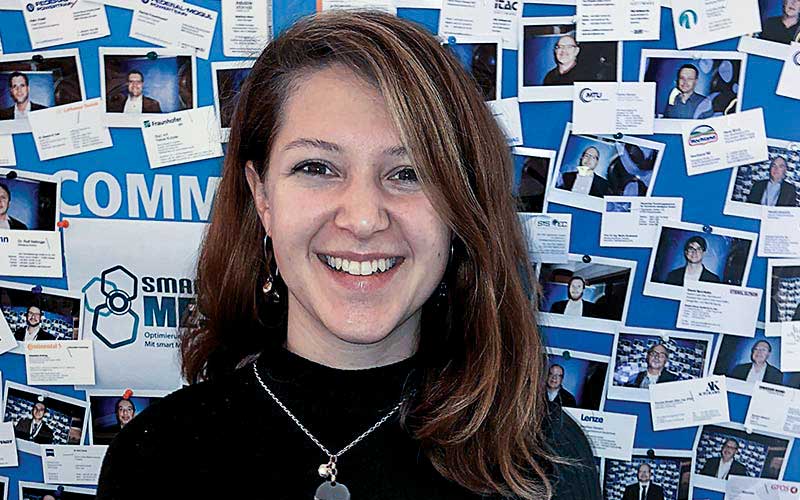
Andrea Götz
Conference Program Manager, Program Director, we.CONECT
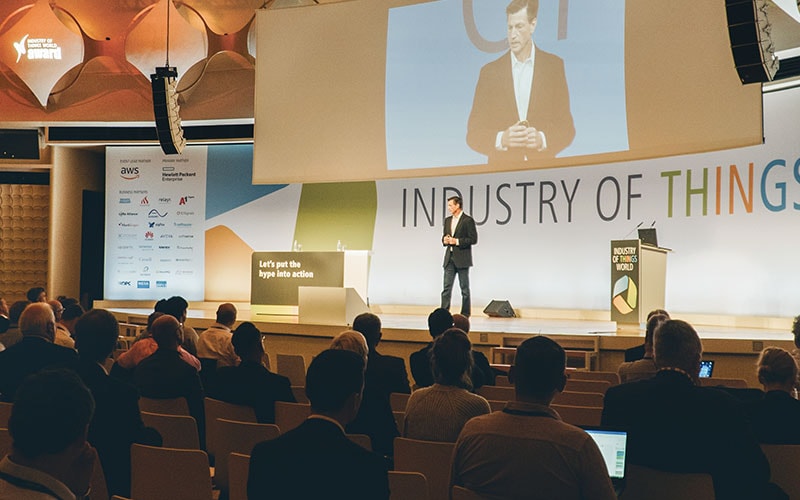
Introduction
Whether it’s the third digital revolution or Industry 4.0, the internet of things (IoT) is a crucial element of the world’s ongoing technological transformation.
Hundreds of industry leaders gathered at the Berlin Congress Center in September to explore IoT’s present and future and to put its “hype into action.” The fifth edition of this conference — Europe’s top industrial IoT event — featured two days of networking, workshops, a boot camp, an innovation lab, and speakers ranging from top academics to global business leaders.
The keynote speakers highlighted the challenges of the strategic realignment of information technology and the need to take digital transformation to the next level. Conference organizers emphasized collaboration across job functions and with different stakeholders.
With billions of devices worldwide, IoT has permeated all parts of our lives. Our homes, cars, watches and factories are all connected. This revolution is creating unprecedented amounts of data that organizations must try to understand and integrate with other technologies, including artificial intelligence and 3D printing. However, IoT success will be judged on its worth in making better decisions.
The low-hanging fruit has already been picked. Now organizations are under pressure to find newer, more powerful ways to use IoT. That could include efficiencies that save millions of dollars or creating entirely new business models.
The solutions could combat climate change, disrupt global supply chains or open the world up to greater cyberthreats. Despite its status as a massive industry with the attention of world leaders, IoT’s future impact is still uncertain and the technology’s promise still evolving.
Survey findings
During the 2019 Industry of Things World Berlin conference we conducted a flash survey on adoption trends in Industry 4.0 and the internet of things (IoT). The short online survey was designed and launched for participating business leaders to share their views during the event. It was an anonymous survey with six objective questions, in addition to the participant’s role and industry. The survey provided valuable insights.
The study confirmed there is significant awareness among business leaders of Industry 4.0, specific initiatives such as IoT and how to go about implementing them. The biggest challenge is in scaling up proof of concepts and pilots into enterprise-level, large-scale implementations. Technology does not seem to be a showstopper. Use case identification. and more importantly business cases at an enterprise level, was identified as the biggest challenge impeding the adoption of Industry 4.0.
Industry 4.0 investment priority
Industry 4.0 is the highest-priority initiative for digital transformation for 18% of the participants. But in execution, only 14% of the organizations have reached an enterprise-level scale of adoption. Approximately 57% remain stuck in a proof of concept and pilot stage, with the rest in use case definition, choice of technology and partner stages. This situation could be because of wrong selection of use cases, technology or partners. Close to Industry 4.0 comes new product innovation as a high-priority initiative (Figure 1).
Figure 1. Key initiatives for digital transformation and their priority
Q: In your digital transformation journey, please select which among the following initiatives are currently undertaken. Please select all that apply.
Source: Infosys Knowledge Institute
Within Industry 4.0, analytics is the most important initiative for more than half of the leaders. IoT ranked second highest — listed by 44% of participants — followed by artificial intelligence and digital twins. Several organizations continue to face challenges in meaningfully using the data gathered from pilot projects to identify actionable insights. Analytics continues to be an area of focus to mature and stabilize. Business leaders should accelerate their initiatives to democratize analytics across the organization at all levels and progress to other areas such as artificial intelligence.
In IoT implementation, the top three use cases are asset monitoring in factories for preventive maintenance, critical process parameter monitoring and installed base management with remotely connected products. The primary focus for IoT is on remote management of critical assets, less need for attention from people, less use of resources such as power and water, and less movement of material.
The implementation of IoT is predominantly internal. The most important among all partners are “internal business teams” — key stakeholders who would benefit most from a successful implementation. More than 65% of the survey participants have involved their business stakeholders at all stages of IoT implementation and sign-off. This shows that the technology is not being adopted just for the sake of doing it. There is deep end-user involvement and business benefit planned. The other partners, in order of priority, are IoT platform providers, system integrators, equipment providers and communication service providers.
The top two challenges in IoT adoption, each identified by close to 18% of study participants, are business case definition and scaling up of pilots (Figure 2). Technology is the least challenging factor. The issue is not in understanding the technology but in mapping it to appropriate business challenges or opportunities for successful implementation.
Figure 2. Challenges in adopting IoT
Q: What is the biggest challenge(s) in adopting IoT? Please select all that apply.
Source: Infosys Knowledge Institute
How different are leaders?
Organizations that have achieved scale in Industry 4.0 adoption do not see it as the highest-priority initiative for digital transformation. They have moved on to other initiatives but continue to manage and improve on their Industry 4.0 initiative. Within Industry 4.0, IoT has become the most important initiative for them, replacing analytics. The biggest challenge faced is the availability of skilled resources, not making the business case or scaling up.
Leaders stuck in the pilot stage of Industry 4.0 and IoT adoption should accelerate their efforts in analytics and in identifying impactful use cases for IoT and business cases for Industry 4.0 that can be quickly scaled up to reach enterprise-level operation.
More than 30% of the 50 participants in the study were from the industrial equipment sector, followed by 22% from technology. The rest were from diverse industries that included automotive, aerospace, high-tech, life sciences and health care.
The third digital revolution
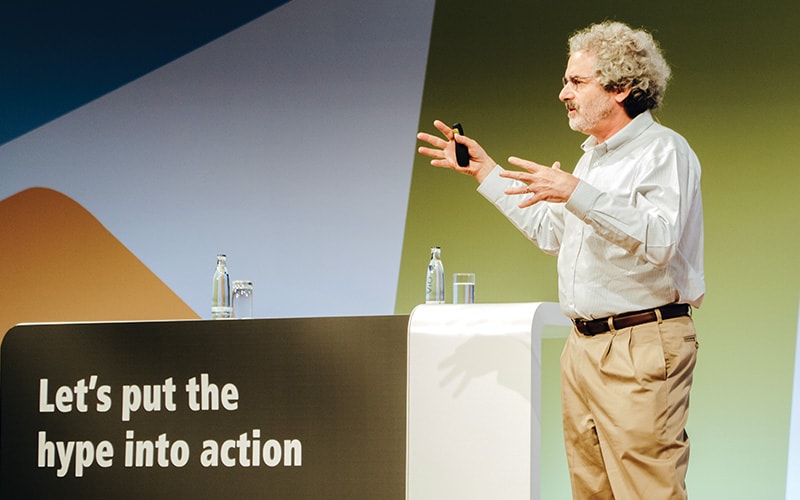
Fifteen years ago, physicist Neil Gershenfeld and colleagues wrote about a future filled with the internet of things (IoT). Light bulbs, thermostats and security systems could be automated or controlled via the internet. IoT devices would activate water sprinklers based on weather and stream entertainment to televisions.
The vision from that 2004 Scientific American article is largely commonplace now. Over several decades, IoT has evolved from a single ARPANET-connected Coca-Cola vending machine at Carnegie Mellon University to billions of devices worldwide on the internet.
But Gershenfeld, director of the Center for Bits and Atoms at the Massachusetts Institute of Technology, told an audience at Industry of Things World Berlin that IoT is more important than they realize. And decisions made now can have critical, long-lasting consequences for the technology.
Internet pioneers
IoT is still early in its growth phase. There are lessons to be learned from choices made during the internet’s infancy, Gershenfeld said.
His influential Scientific American article was co-written with Danny Cohen, one of the internet’s original architects. Gershenfeld said a key lesson learned from Cohen was to keep numbers out of the technical specifications. That’s a mistake that can become a limiting factor for a technology.
“The only number they put in was the one they got wrong, which was 32 bits in IPv4,” Gershenfeld said about the internet protocol introduced in 1981. That specification allowed for slightly more than 4 billion IP addresses, although not all were useable. The growth of the internet proved that wasn’t nearly enough.
“It’s taken a few decades to fix that,” Gershenfeld said about the new 128-bit standard ratified in 2017.
Another valuable lesson learned from internet pioneers is to consider how you define a network. Gershenfeld praised the “end-to-end principle” used on the internet. He has written that this approach — in which functions reside on the ends of the network — ensures that new applications can be created without upgrading the entire network.
“What the internet does is defined by what you connect to it, not by how it’s constructed, so you can innovate at the edges,” Gershenfeld said.
IoT mistakes
Gershenfeld said he fears that some IoT developers are repeating past mistakes as the technology is established.
“IOT is actually the BITNET of things,” he said, referring to the academic network that came before the internet. “It actually gets wrong everything we learned from these internet pioneers.”
BITNET — Because It’s Time Network — was an early centralized network of mainframe computers that started a steep decline in the mid-1990s.
Gershenfeld said he has seen similarities between IoT and that now defunct competitor to the internet.
“One of the mistakes it [IoT] makes is it locks down data rates, modulation in coding, payloads, all of the things, so it’s impossible to scale through 11 orders of magnitude,” he said.
Also Gershenfeld said that a “dumb sensor connected to a central smart device is not IOT, because like the BITNET, you can’t innovate at the device. You need access to the central server, which is exactly the state before the internet came.”
Connecting devices indirectly “erects barriers to their use,” Gershenfeld has written.
“Just because it’s connected to the internet doesn’t really mean that it’s IoT,” he told the audience in Berlin.
Digital to physical
Another innovation Gershenfeld championed is “fab labs,” designed to bring small-scale manufacturing to the masses. He was an early advocate of the maker movement and founded a worldwide network with more than 1,000 labs.
“Instead of millions of dollars, it’s about a hundred thousand dollars in digital fabrication tools — broadly, everything you need to go from digital data to physical things,” Gershenfeld said.
Combining his fab lab and IoT interests, Gershenfeld built $1 web servers that could handle small amounts of data. It’s not enough for traditional computing uses but provides enough for simple IoT devices.
Gershenfeld’s interest in the convergence of the digital and physical worlds convinced him to write a book, “Designing Reality,” about the third digital revolution. The book was written with his brothers — one a former executive at video game giant Activision and the other a scholar of workplace transformation and institutional change.
“After the first digital revolutions, when you could see the scaling, it took us decades to catch up to income inequality, fake news, spam, all of the things that went wrong as well as the opportunity,” Gershenfeld said. “We’re now at the beginning of the same 50 years of scaling. But we don’t need to wait 50 years to try to deal with the social impact.”
He said this local manufacturing could eventually challenge the global supply chain. Even the systems for manufacturing electronics could be disrupted.
“What’s crazy here is this global supply chain of electronic components is only made out of about four or so material properties: resistive, conducting, semi-conducting, insulating,” Gershenfeld said. “All of life is made out of just an inventory of 20 parts, the amino acids. In the same way, we’ve been looking at [whether you can] make all of technology out of a tiny set of building blocks to get rid of the global supply chain.”
Expansive network
Rather than limiting networks, Gershenfeld said he seeks to broaden their possibilities. A boundary-breaking effort was the Interspecies Internet Workshop he co-hosted at MIT in July.
That project started with musician Peter Gabriel collaborating with a bonobo, an endangered ape that is one of humanity’s closest relations. The experiment was less about producing commercial music than about expanding our communications network.
“That night, we began to dream,” Gabriel said in a TED Talk about this project. “We thought perhaps the most amazing tool that man has created is the internet.”
Gershenfeld said this musical project expanded his thinking. Communications and networks don’t need to be as restrictive.

“This has grown into, actually, a very serious project, that the internet forgot most of the cognitive species on the planet”
Connecting various species via the internet serves obvious purposes, including enrichment, research and preservation, Gershenfeld said. But he and his collaborators concluded that there are lessons to be learned from expanding our notions about communication, whether it’s with apes, dolphins, internet-connected devices or perhaps even, one day, aliens.
Taking digital transformation to the next level
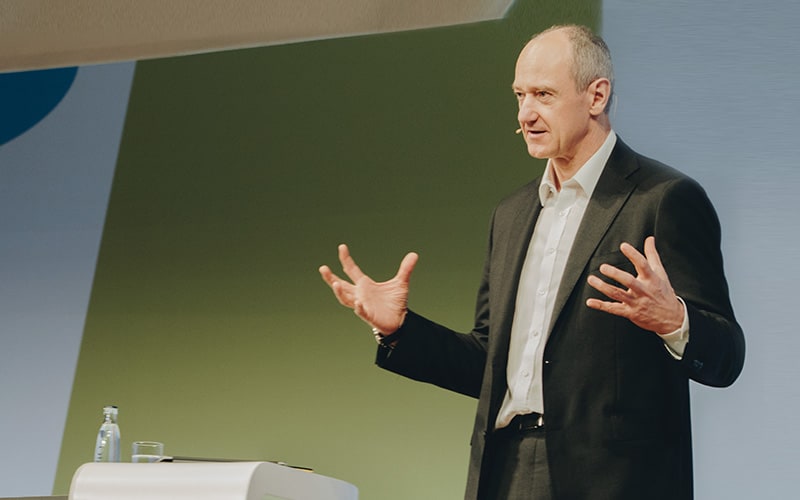
The internet of things (IoT) offers clear benefits to companies. Organizations, however, must decide what they want from this technology.
Roland Busch, chief operating officer and chief technology officer of Siemens AG, sees two uses for IoT: productivity and disruption. Both are valuable but in different ways.
Productivity is incremental, even if it is doubled, while disruption requires rethinking your business model, Busch told an audience in a keynote address at Industry of Things World Berlin.
Optimization
Even the use of IoT for efficiency rather than transformation can produce impressive results. At Siemens, the industrial giant’s high-speed Sapsan train traveled 13 million kilometers through harsh environments without a breakdown. And since April 2018, the train has traveled 50 million kilometers between St. Petersburg and Moscow without a technical interruption.
Siemens made that possible by measuring 300 train components and creating 10,000 data sets. Artificial intelligence (AI) and deep learning technology analyzes the 2 terabytes of data collected annually to predict what might happen.

“We did have problems, but we were able to detect them a little bit earlier…We can pull off a [Sapsan] train, repair it, before something happens”
On the factory floor, a similar approach can help companies reach a 99.999% manufacturing quality rate and offer the possibility of adding another nine, Busch said.
At Siemens, he said, the company uses digital twins for both its plants and its products. Connected machinery, edge computing and AI all contribute to quality improvements.
“We know when a [printed circuit board] is manufactured, in certain cases, that it’s wrong,” Busch said. “We don’t have to get it to the X-ray.”
In the case of Australian surfboard maker Firewire, the company’s growth was limited by staffing. There just weren’t enough people to design the customized boards.
Busch said the company digitized the custom design process with Siemens NX software and cleared hurdles that were limiting its growth. Now, the company’s design page allows buyers to customize surfboards based on a variety of factors, including the rider’s weight and types of waves surfed.
Barriers
If the benefits of IoT and related technologies are clear, Busch asked, “Why isn’t that spreading?”
One of the top challenges is data quantity and quality. Busch said many companies have “brownfield” equipment, meaning it was not designed to continuously measure or analyze data. And when those inputs are available, AI experts spend a great deal of time cleaning up the raw data to make it usable.
Also, the data is effective only when there are skilled workers who can make use of it. Busch said IoT combines information technology and operational technology. Companies need a strong combination of both to connect the two sides.
Organizations also worry about cybersecurity and agonize about where data is stored.
“Some people just refuse to go into the cloud,” Busch said. “They want to have it on the premises. Some people even don’t want to connect the manufacturing side to the cloud or to any kind of internet.”
Organizations often struggle with the transition from pilot stage to operating companywide. Busch said this technology rollout raises many issues, from security to connectivity to return on investment. All those decisions have long-term consequences.
“You have to maintain and update your devices at the edge because we have cybersecurity patches,” Busch said. “And you don’t have to do it only for one or two years, like in the phone industry where you exchange your phone. You have to maintain that for, maybe, the next 10 or 20 years.”
Next level
Even with all these challenges, many organizations are rushing forward. An executive with chemical manufacturer Covestro said IoT-generated data opens new opportunities.

“Leveraging our own know-how in the data from the customers, reducing materials usage, reducing their spec rates, reducing or improving their processes, is improving customer quality”
“That is a stand-alone business model in the chemical industry, not linked to selling them materials.”
In Norway, Siemens is digitizing the nation’s railroad signaling system. “We are bringing 330 interlocking systems down to one, which sits in the cloud,” Busch said about the nearly $900 million project.
To enhance the high level of security needed, Siemens uses secure communication diodes that “can write or read only in one dimension,” Busch said.
A short airplane flight away in Potsdam, Germany, Siemens created an autonomous light rail train. Busch said trams and trains operating in crowded urban environments provide many more challenges than other forms of autonomous transportation.
“Metros, they are normally running in a contained environment…Autonomous driving is already there,” he said. “Light rail is different. Light rail interferes with traffic. There are lot of traffic problems, and also crashes, accidents.”
The latest technology uses light detection and ranging (lidar) and a camera system to give the train “digital eyes,” Busch said. Even with that advanced and evolving technology, the Potsdam train has a safety driver, a common precaution with early versions of autonomous transportation.
Siemens is also designing collaborative technology that combines the benefits of the cloud and the edge.
“We are training the algorithms in the cloud, where you need a massive amount of data and processing,” Busch said. “Once the algorithm is trained, we push it back to the edge device, to the [network processing unit], and then it controls the system in real time because it sits at the shop floor.”
As Siemens presses forward with these efforts, Busch said the company stays focused on the goal of generating customer value.
“This is the reason why we do that at Siemens,” he said. The company is “not building a platform for the sake of building a platform but for really driving our economy to the next level…Let’s put the hype into action.”
Prospects for the internet of things — Energy efficiency
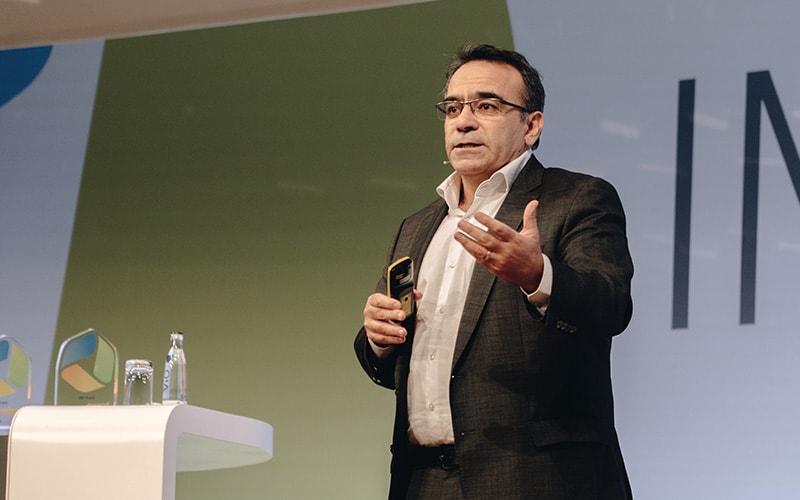
Businesses have pursued efficiency for as long as they’ve existed. However, there is still far to go and a staggering amount of untapped value and savings.
At Industry of Things World Berlin, speakers explained how modest efficiency improvements could save billions of dollars and help mitigate climate change. Overall, the World Economic Forum has estimated that digital transformation in the energy sector could unlock $1.3 trillion in value worldwide between 2016 and 2025. The total value to society is estimated at $2 trillion.
Many of those advances will be enabled or enhanced by the rapid rise of the internet of things (IoT). There are expected to be 30 billion IoT devices by 2020 and 75 billion by 2025.
Here are insights from Berlin IoT conference speakers who addressed the future of efficiency.
General Electric
IoT provides data needed for the digital tools that will improve companies’ bottom lines as well as the environment, said Maher Chebbo, chief business innovation officer at General Electric, in his keynote address.
Digital twins can create predictive models to keep track of the effects of temperature, wear and misalignments in wind turbines. Blockchain and peer-to-peer networks can facilitate cheaper electricity sales and purchases on microgrids.
Autonomous driving technology can optimize traffic and contribute to the creation of smart cities.
Technology can also assist with the “circular economy” and its goal of reducing waste, Chebbo said. As batteries become more important to the energy mix, that creates new burdens that organizations are looking to solve. Swedish company Northvolt is creating 100% recycled batteries and has Volkswagen and BMW as investors.
Each of those initiatives drive value for organizations as well as mitigating climate change impacts.
Chebbo, a member of a European Union committee studying the transition to a lower-carbon future, said IoT will facilitate predictive maintenance, lower fuel consumption and create other savings opportunities.
Big savings
In one case, Chebbo said, a company in Pakistan could save $200 million over the next 20 years by adjusting the heat rate at its industrial facilities by 0.5%.
GE’s monitoring diagnostic center in Atlanta keeps track of more than 5,000 assets worldwide. The company estimated that the center prevented $250 million worth of failures from 2016 to 2017.
“This is the kind of data we can get from gathering this information and running the models,” Chebbo added. “We defined the number of use cases as well, not only specific to generation, but across the value chain, transmission and distribution and also around the customer side.”
Chebbo said his company’s digital road map seeks to double or triple many key impacts — from capacity to emissions to startup fuel — in the coming years.
GE has also studied the benefits of modest efficiency gains in other sectors. He looked at five asset-intensive industries and calculated the savings that would be created if efficiency were to increase by just 1%. That would add up to $276 billion over 15 years, he said.
Those estimated savings are:
$90 billion — oil and gas.
$66 billion — power.
$63 billion — health care.
$30 billion — aviation.
$27 billion — rail.
These numbers illustrate the opportunities still available as organizations become more efficient and flexible.
“The goal is to have better health and of course to have a better city, in terms of transportation, good living, energy and also attracting investors,” Chebbo said. “Overall it is to get, always, much better in the world where we live.”
ENGIE
Csilla Kohalmi-Monfils, executive vice president of innovation at multinational energy company ENGIE, said the organization has been using IoT technology for decades. However, now it’s much easier and cheaper, and also expanding to other parts of the enterprise.
“Before, we wired up everything that was worth it for those large power plants and networks,” she said, referring to the company’s most expensive and sophisticated machinery. “We had very little IoT, for example, in our services business, which is very people intensive and which actually is two-thirds of our workforce.”
Those large industrial processes were automated and overseen globally. But there was another part of the business — often at the client site — that relied on hands-on work with little automation.
“The whole notion of IoT was how can we use cheaper devices, cheaper connectivity, smarter solutions to actually improve our own efficiency and meet our [service-level agreements] and maybe improve our profitability, or just improve the customer satisfaction around those services?” Kohalmi-Monfils said.
That transition also poses a number of questions, she said: “Should we be developing our own IoT network? Should we be investing in IoT networks? Should we make a bet on one IoT network versus another one?”
In one case, ENGIE developed a proprietary IoT network for French natural gas distribution company GRDF. Many of these technological solutions are simple, inexpensive systems that require small amounts of data. Once companies start gathering that data, they can generate new product ideas and offer new solutions, such as natural gas and electricity networks.
Vibration sensors can facilitate preventive maintenance for streetlights or for heating, air conditioning, and ventilation systems. That sort of monitoring is crucial as companies expand into “as a service” models and need to meet strict SLAs.
Besides efficiency, there is a safety dividend with IoT. Kohalmi-Monfils said companies are monitoring large industrial gas tanks.
“There has been 30% efficiency gained on the fact that somebody doesn’t have to go and look into these gas tanks, especially the ones that are quite large,” she said. “It’s actually quite dangerous to be doing this.”
On the consumer side, IoT data could also allow distributors to predict when customers’ liquefied petroleum gas tanks are running low.
“It makes tremendous optimization opportunity for the gas distribution company as they can figure out when to deliver to which areas and make an optimal route,” Kohalmi-Monfils said.
Leveraging the internet of things to create smart buildings that unlock value
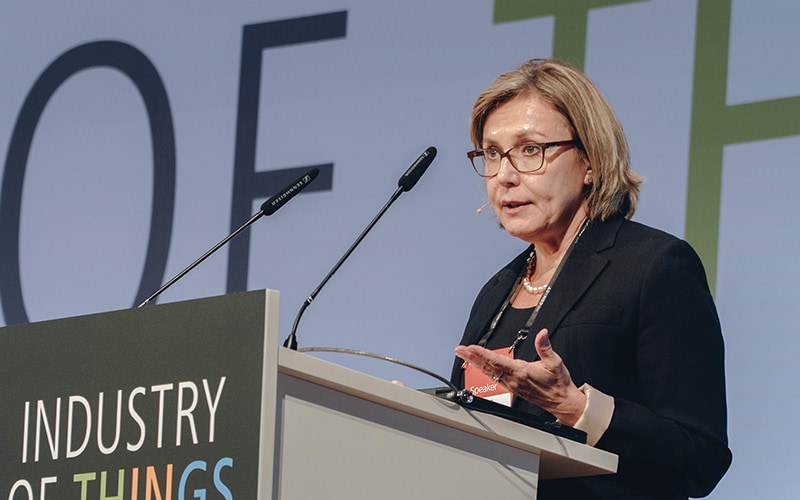
Buildings are the cornerstones of our cities and lives — the places where we spend 90% of our time, said Rada Rodriguez, a top executive at French multinational Schneider Electric. That makes the transition to smart, self-healing buildings increasingly important as we demand more of our homes and offices.
The internet of things (IoT) and other advanced technologies can create new value and unlock existing value for building owners and managers. Maintenance, downtime, energy and safety costs can all be cut significantly in smart buildings, Rodriguez said in a recent keynote address at Industry of Things World Berlin.
Meanwhile, these same efforts can enhance the well-being of occupants, from residential renters to office workers. They want more control over their workspaces and living spaces, said Rodriguez, Schneider Electric’s senior vice president of alliances.
“We know that buildings that offer a comfortable environment for their occupants contribute to people being more productive, so buildings turn into more engaging places,” she said.
Building expectations
A Navigant Research study has shown that people expect buildings to be smart, comfortable, and energy and operationally efficient. These higher expectations are often attributed to an outgrowth of the rise of millennials, who insist on better technology, flexible hours, remote working opportunities and greater work-life balance. That generation is expected to constitute 75% of the world’s workforce by 2025.

“In the digital economy, a new type of building is emerging”
These structures are fueled by cloud computing, mobile technology and IoT, and “are creating enormous opportunities for information gathering, for information sharing, analytics, impacting the way buildings are run.”
The transition to smart buildings is gradually making progress as organizations move beyond traditional building automation, Rodriguez said.
She said there is a clear need for an IoT-enabled approach to a building’s entire life cycle, from planning to construction to operations. And this technology promises to benefit all stakeholders, including owners, facility managers and occupants.

“To make smart buildings and IoT platforms a reality in this area, we need to first understand the size of the opportunity and the nature of the opportunity”
What are the costs?
Construction is the largest cost component of a new building. However, Rodriguez said attention should also be paid to the operations phase. Even when a structure has reached the first level of automation, such as using a building management system, 70% of the building life cycle cost is still incurred during operations, she said.
Overall, half of equipment downtime in buildings is related to electricity problems, which can be reduced by greater monitoring and automation.
Ten percent of nonresidential building fires are related to electrical system failures.
Thirty to forty percent of unscheduled heating, ventilation and air conditioning downtime is related to power issues.
Fifty percent of equipment downtime is due to electricity issues.
Fires cost owners and insurance companies hundreds of millions of dollars annually in the U.S. alone. Also, temperature and ventilation problems are not only comfort issues but also lead to more employee sick leave and can hamper business processes and collaboration, Rodriguez said.
Benefits of smart buildings
Smart buildings are also the solution to optimizing energy efficiency. Rodriguez said emerging technology can better extract the 30% to 50% of untapped energy savings.
As the electric grid modernizes, buildings using renewable energy and batteries can also become distributed generation assets. That would ease problems associated with the volatility of renewable energy sources and lessen the burden on transmission infrastructure.
An inevitable result of those savings is a reduction in a building’s carbon footprint, a priority for companies wanting net-zero-energy and net-zero-carbon buildings. Also, that can make a building more attractive to tenants and provide financial benefits. Dodge Data & Analytics found that green buildings command a 7% increase in asset value compared to traditional buildings, according to the World Green Building Council.
Rodriguez said that her company’s IoT platform, EcoStruxure, allows building managers to solve 60% to 80% of maintenance issues remotely.
“Data from different sources can be gathered and cross-analyzed to drive alerts…using artificial intelligence [AI] analytics to help detect unforeseen issues and opportunities,” she said. “For the facility managers, there will be the possibility to be equipped with insights on hidden faults that traditional systems would not have detected.”
Companies need to complement the existing integrated management software and systems. That includes developing new hardware and updating existing hardware to “take advantage of the applications, analytics and services enabled by the data which we generate,” Rodriguez said.
She noted three key points that are driving these building changes: efficiency, user experience, and safety and reliability.
“Through connectivity, big data analytics, we enable the next step from automated operation toward intuitive operation,” Rodriguez said.
Real-world results
The company’s suburban Paris headquarters — a workplace with about 2,000 employees — provides a look at the future of buildings. In the past eight years, the company has reduced its energy consumption there from 150 kWh to 50 kWh per square meter.
Among buildings overall, Rodriguez said, about 80% of the savings from active energy management are “still up for grabs.”
At French financial services firm Société Générale, the EcoStruxure system allows employees to adjust temperature settings, book meeting rooms, find parking spaces, locate available desks and check cafeteria menus. Schneider Electric has estimated that the automation system saves each employee 20 productive hours per year.
Headquarters and offices don’t need to be a burden for companies. They can be “automatically tuned to individual needs and usage,” Rodriguez said.
“A building is no longer a project you develop or a project you run,” she said. “It is an asset that you need to optimize, and if this asset is more efficient or safe or reliable, of course, the value will increase.”
The internet of things, used by people
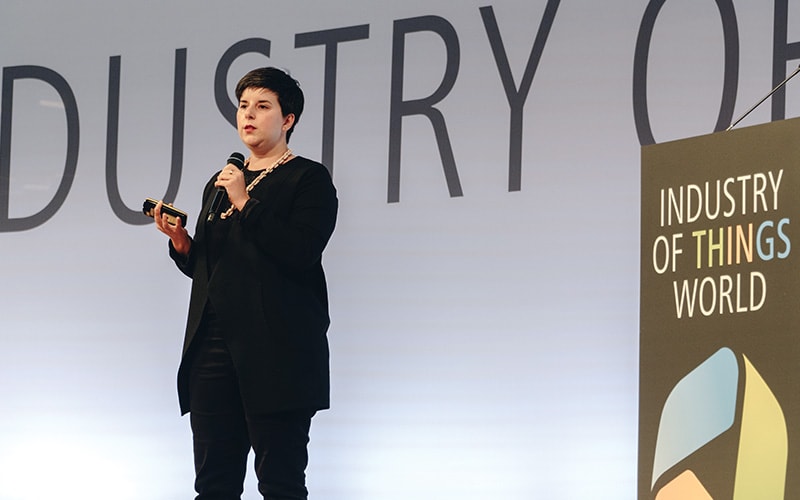
The internet of things (IoT) is embedding technology in all parts of our lives.
IoT devices were introduced to the public through consumer technology as ways to make our lives a little easier. But sometimes the price is embarrassing glitches, said Alexandra Deschamps-Sonsino, an IoT thought leader, entrepreneur and product designer.
Internet-connected scales sometimes allow you to see someone else’s weight, she said recently at an Industry of Things World Berlin keynote address. There was also the moment in Fitbit’s early days when the fitness tracker’s user data was briefly available to the public. Some people listed sex as a physical activity, and those details were shared on the internet.

“Consumer rights in general are really challenged by the idea that there are physical products in our everyday spaces that have software attached to it”
And, she said, these objects “exist in ways we don’t necessarily know how to predict.”
In some cases, collected data is poorly analyzed and risks being misused. Facial recognition software has struggled to identify people of certain races, which could lead to more serious consequences.
“Things that sound like good ideas and are massively invested in, and then you realize that there’s some bias built in,” Deschamps-Sonsino said.
New risks for IoT
The stakes are increasingly high as IoT devices pervade the workplace. She said this IoT wave raises fundamental questions.
- What does it mean to track everything?
- What does it mean to track the work done?
- Does it make for better work?
Deschamps-Sonsino’s talk combined two areas of her expertise. The founder of Designswarm Industries is working on her second book about corporate culture and innovation. She has also led the London IoT meetup for the past eight years and was the U.K.’s first distributor of Arduino, an open-source IoT pioneer.
Since Deschamps-Sonsino started selling Arduino from her East London apartment in 2007, the IoT landscape has changed considerably.
As manufacturing costs have declined, so have the risks of experimentation. Types of products that might have flopped a few years ago have the potential to be hits now, Deschamps-Sonsino said.
“It’s cheaper than ever to manufacture products that would’ve been classified as dumb,” she said. “And now they’re smart. So the cost of trying something out is very low.”
One major downside is the quality of the user experience. She said it is often “very messy” because of that low barrier to entry.
“There are, of course, technical limitations. We are living in a world where not everything is entirely possible, nor is it entirely completely well-designed,” Deschamps-Sonsino said.
IoT in the workplace
Meanwhile, organizations are considering this technology as one way to aggressively pursue efficiency, Deschamps-Sonsino said. Google-popularized objectives and key results (OKRs) are gaining popularity among tech firms, often embraced via the book “Measure What Matters.”
She said that workplace sensors could play a role in monitoring employees and creating “an ecology of thinking and ecology of knowledge that is building around the idea that everything in a business is worth calculating and collecting data on.”
But even John Doerr, the venture capitalist and author of “Measure What Matters,” acknowledged that “OKRs are not a silver bullet.”
He said these measurements “cannot substitute for sound judgment, for strong leadership, or a creative workplace culture.”
“People have talked about the idea of measuring what happens to an employee, measuring what happens to a person, when or where they are, how I can reach them, etc.,” Deschamps-Sonsino said. “And that opens up a Pandora’s box of data that you may or may not want to know.”
As in the Fitbit example, there is potential for data sharing that shouldn’t happen, she said. “They’ve decided to tag their activity in ways you haven’t necessarily anticipated as a business owner, or as a group owner, or as someone who’s running a factory floor.”
Difficult questions
In her presentation, Deschamps-Sonsino discussed human resources views on the pros and cons of using GPS to track workers. Organizations must ask tough questions about consent and understand how the data will be used before proceeding with collection.
There are power dynamics in play that need to be considered, she said.
Business executives — particularly in some parts of the world — must balance the data they collect with government regulations. Europe’s General Data Protection Regulation as well as rules elsewhere force organizations to ask difficult questions about the reasons for collecting employee productivity data and “assigning blame,” Deschamps-Sonsino said.
It’s not enough to simply decide “Well, this is technology we can afford,” she said.
While wearable devices and other technology provide potentially valuable data, they can also create new distractions. Deschamps-Sonsino likened this to research showing the dangers of drivers preoccupied by our ubiquitous mobile devices.
“…We again like to talk about putting a chip on it, and putting technology in things that allow our businesses to know what’s going on,” Deschamps-Sonsino said, “but we also have a reduced view of what our responsibilities are when we do that.
“And having more data doesn’t necessarily lead to better work conditions either,” she added. “More data might actually [make] you more aggressive toward your particular team… And data only really works, I think, when it’s fully understood, fully taken onboard, and when we have things that are other than dashboards.”
A more important key to business success is creating a workplace environment where people want to “give everything they have to give within the constraints of a very good work-life balance,” Deschamps-Sonsino said.
“Data has a role to play, but I don’t think that it’s the only role,” she said. “You have to look at yourself as a leader, general. I think those chapters tend to get ignored by some business leaders.”
Catalyzing the industrial internet of things ecosystem and accelerating innovation
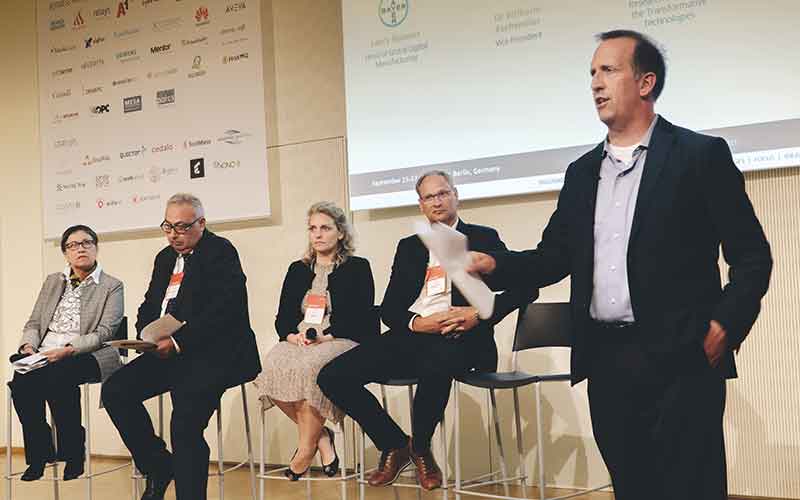
The emergence of 5G will reduce lag, accelerate data transfer and pressure organizations to take advantage of new opportunities. However, this technology breakthrough also raises important questions about the development of that new ecosystem, said Larry Reuwer, head of global digital manufacturing at Bayer’s Crop Science.
“How are we going to get to it?” he asked. “How is it going to be reliably used?”
Soon, organizations will have to craft their own business cases for 5G and determine how, or whether, it makes more sense than the current generations of wireless technology, Reuwer told an audience at Industry of Things World Berlin.
The following are highlights from a 5G panel discussion Reuwer moderated.
Small-scale 5G
Wilhelm Eschweiler, vice president of Bundesnetzagentur, the German regulators for telecommunications and other utilities, said the industrial sector relies heavily on robust infrastructure. That includes new 5G spectrum, distributed both nationally and locally.
Eschweiler’s agency has recently auctioned wireless spectrum for use in so-called campus networks, which include small- and medium-sized firms as well as startups.
“We are the first ones doing that,” he said about this small-scale approach to 5G. “This is a way we are trying to stabilize, to innovate the industry in Germany…Industry in Germany is the heart of our economy.”
These local licenses provide a flexible approach to the 5G rollout, which is mainly assigning spectrum to telecom carriers. Now, Eschweiler said, it’s up to industry to decide how to best take advantage of those opportunities.
5G isn’t always the answer
5G is frequently mentioned as one of the key technologies that will facilitate the growth of IoT. But it’s hardly the only solution, said Aurelius Wosylus, chief sales officer of Sigfox, a leading IoT service provider.
Wosylus said the communication’s ecosystem has always been a mix of technologies. Wi-Fi and Bluetooth have coexisted with 2G, 3G and 4G. Now, 5G is gradually being added to the spectrum available worldwide, but it might not make sense in all cases.
At France-based Sigfox, the company operates a low-power network using Ultra Narrow Band radio signals to communicate with IoT devices.
“Every technology has its squeeze points in applications in the market,” Wosylus said. “So it’s more a mixture of communication technologies, and a consolidation of data in one or limited platforms to come, where companies can come and, let’s say, mesh and analyze data.”
Reuwer said the best solutions for some companies might not involve the latest and greatest technology.
5G concerns
Monique Morrow, president and co-founder of the Humanized Internet and former chief technology officer at Cisco, said 5G is promising for certain applications, from vehicles to augmented reality to robotics.
“However, there is a polarity between that [access] and security,” she said. “We have to, as technologists and as people who are in this industry, communicate the safety requirements for devices, whether they are medical devices that are implanted or whether they are devices that are on the factory floor.”
Morrow said that cybersecurity attacks on IoT devices have increased by 300% as this technology proliferates. Technology events, including one she moderated recently in Switzerland, are looking at dystopian scenarios that could be created by cyberattacks on critical infrastructure.
“That will have implications to the whole notion of safety,” she said. “So we have to think about security, safety, as we develop industrial IoT and as we apply 5G.”
Industry also needs to communicate better with the public about the safety of 5G. Morrow noted that many people are concerned that the new technology poses a health hazard. There is no scientific evidence of harm from 5G or similar non-ionizing radiation.
“You have a lot of uproar in that environment,” Morrow said. “And so that is incumbent upon us.”
Four pillars
Jenalea Howell, research director of transformative technologies at IHS Markit, said her company looks at the four pillars of IoT: connect, collect, compute and create.
All those pillars are innovating, but “we haven’t moved beyond connectivity to collection technology,” she said.
In the connectivity phase, organizations are now trying to figure out how 5G will relate to private LTE as well as other technology.
“Once we move beyond connectivity, we start talking about getting that data off of those devices. How do you collect, how do you store that data?” Howell asked. “So some of the advancements we’ve seen in sensors will really play into this as well.”
Next, companies have to decide where to analyze the data collected. On the edge? In the cloud? What kind of cloud solutions?
“There are tons of technologies out there that can enable this to change,” Howell said.
In agriculture, there are promising and cost-effective solutions in the near future. That industry is ripe for the collection of sensor data, but then you need to “do something great with it,” Howell said.
“If we were to use a drone, collect some video feed, and provide analytics on top of that video, at the end of the day you might have a cheaper overall solution,” Howell said. “And a more effective solution.”
Reuwer said that approach can solve the problem of sensors and having a “bunch of plastic or metal lying around in our fields.”
Business case
While organizations are weighing these issues, many still need to determine the business case for 5G.
Those decisions will determine whether 5G is an evolutionary or a transformative technology. “It is identifying some of those new spaces, how do we bring in video, and really how does that change businesses, in your own business models?” Howell asked.
It is not always easy to keep people focused on that part of the transition.
“For any new generation of technology, you have people who have to keep the business running, and then you have people who are gravitating toward the cool stuff,” Morrow said. “There is that polarity. And everybody wants to go to the cool stuff.”
Contributors
Infosys would like to acknowledge the contributions made by each of the speakers who contributed to this journal. Their insights and thought leadership are greatly appreciated and helped make Industry of Things World USA 2019 a richer experience for all participants.
Alexandra Deschamps-Sonsino
Internet of Things Thought Leader, Entrepreneur and Product Designer
Aurelius Wosylus
Chief Sales Officer, Sigfox
Csilla Kohalmi-Monfils
Executive Vice President of Innovation, ENGIE
Jenalea Howell
Research Director of Transformative Technologies, IHS Markit
Larry Reuwer
Head of Global Digital Manufacturing, Bayer Crop Science
Maher Chebbo
Executive SVP, Chief Business Innovation Officer at General Electric
Monique Morrow
President and Co-founder of Humanized Internet/Former CTO at Cisco
Neil Gershenfeld
Director, MIT Center for Bits and Atoms
Rada Rodriguez
SVP Strategy and Alliances, Schneider Electric
Roland Busch
COO, CTO and Managing Board Member, Siemens AG
Wilhelm Eschweiler
Vice President, Bundesnetzagentur
In addition, we would like to thank the other 117 speakers, as well as the other experts who contributed to Industry of Things World Berlin 2019 and made it an inspiring experience.
To learn more, please visit industryofthingsworld.com.
About Infosys Knowledge Institute
The Infosys Knowledge Institute helps industry leaders develop a deeper understanding of business and technology trends through compelling thought leadership. Our researchers and subject matter experts provide a fact base that aids decision making on critical business and technology issues.
To view our research, visit Infosys Knowledge Institute at infosys.com/IKI/
